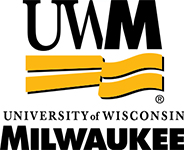Avian precardiac endoderm/mesoderm induces cardiac myocyte differentiation in murine embryonic stem cells. Circ Res 2004 Jun 25;94(12):e107-16
Date
06/12/2004Pubmed ID
15192018DOI
10.1161/01.RES.0000134852.12783.6eScopus ID
2-s2.0-14944382560 (requires institutional sign-in at Scopus site) 46 CitationsAbstract
The ability to regenerate damaged myocardium with tissue derived from embryonic stem (ES) cells is currently undergoing extensive investigation. As a prerequisite to transplantation therapy, strategies must be developed to induce ES cells to the cardiac phenotype. Toward this end, cues from mechanisms of embryonic induction have been exploited, based on previous findings that anterior lateral endoderm (precardiac endoderm) from gastrulation-stage chick embryos potently induces cardiac myocyte differentiation in both precardiac and nonprecardiac mesoderm. Hypothesizing that avian precardiac endoderm acting as feeder/inducer cells would induce high percentage conversion of murine ES (mES) cells into cardiac myocytes, it was observed that the majority (approximately 65%) of cocultured ES cell-derived embryoid bodies (EBs) were enriched in cardiac myocytes and exhibited rhythmic contractions. By contrast, mouse EBs cultured alone, or on feeder layers of mouse embryonic fibroblasts or avian nonprecardiac posterior endoderm, contained only 7% to 16% cardiac myocytes while exhibiting a relatively low incidence (<10%) of beating. When mES cells were cocultured with a bilayer of explanted precardiac endoderm/mesoderm, the incidence of rhythmically contractile EBs increased to 100%. To verify that the rhythmically contractile cells were derived from murine ES cells, cell-free medium conditioned by avian precardiac endoderm/mesoderm was used to induce myocyte differentiation in a mES cell-line containing a nuclear LacZ reporter marker gene under control of the cardiac-specific alpha-myosin heavy chain promoter, resulting in rhythmic contractility in 92% of EBs in which the majority of cells (average=86%) were identified as cardiac myocytes. The inductive efficacy of medium conditioned by avian precardiac endoderm/mesoderm may provide an opportunity to biochemically define factors that induce cardiac myocyte differentiation in ES cells. The full text of this article is available online at http://circres.ahajournals.org.
Author List
Rudy-Reil D, Lough JMESH terms used to index this publication - Major topics in bold
AnimalsCell Differentiation
Cell Lineage
Cells, Cultured
Chick Embryo
Coculture Techniques
Culture Media, Conditioned
Embryonic Induction
Endoderm
Fibroblasts
Gastrula
Genes, Reporter
Gestational Age
Hypoxanthine Phosphoribosyltransferase
Lac Operon
Mesoderm
Mice
Morphogenesis
Myocardial Contraction
Myocytes, Cardiac
Myosin Heavy Chains
Pluripotent Stem Cells
Promoter Regions, Genetic
Species Specificity









